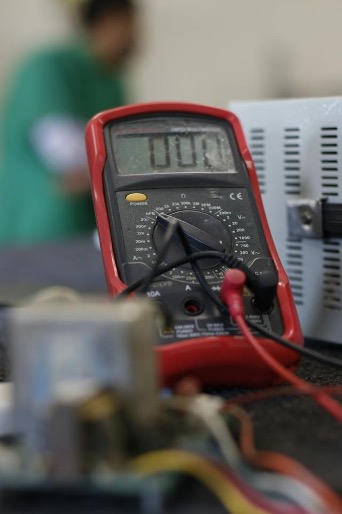A multimeter is an essential tool for electrical engineers and helps measure various electrical quantities such as voltage, current, and resistance. It is a versatile device that combines several measurement functions into one unit, making it convenient and efficient for troubleshooting and testing electrical circuits.
Understanding a multimeter’s essential components and functions is crucial for electrical engineers. The device typically consists of a display screen, selection dial, input jacks, and test leads. The display screen shows the measured values, while the selection dial allows users to choose the desired measurement function. The input jacks are where the test leads connect to the multimeter.

Using a multimeter
To use a multimeter, follow these steps:
- Safety First – Before using a multimeter, ensure the equipment you are working on is powered off and disconnected from any power source – this will prevent any potential electrical hazards.
- Select the Measurement Function – Turn the selection dial to the appropriate measurement function based on what you want to measure. For example, if you want to measure voltage, select the voltage function.
- Set the Range – Multimeters have different ranges for each measurement function. Choose the appropriate range based on the expected value of the quantity you are measuring. If unsure, start with the highest range and gradually decrease it until you get a reading.
- Connect the Test Leads – Insert the test leads into the corresponding input jacks on the multimeter. The red lead is typically used for positive measurements, such as voltage, while the black lead is available for negative measurements or common ground.
- Connect the Test Leads to the Circuit – Connect the test leads to the circuit you want to measure. For voltage measurements, connect the leads in parallel to the voltage source. For current measurements, the multimeter must connect in series with the circuit.
- Read the Measurement – Once the test leads are correctly connected, you can read the measurement on the display screen. Make sure to interpret the measurement correctly, considering the unit of measurement and any decimal places.
- Take Precautions – When using a multimeter, precautions are vital to avoid damaging the device or getting inaccurate readings. Avoid touching the metal parts of the test leads while taking measurements, as this can introduce errors. Additionally, be cautious when working with high voltages or currents.
Engineers can effectively use a multimeter to measure various electrical quantities by following these steps. A versatile tool for diagnosing electrical problems, testing components, and ensuring the proper functioning of electrical systems – the multimeter is an essential piece of equipment on the desk of every electrical engineer.